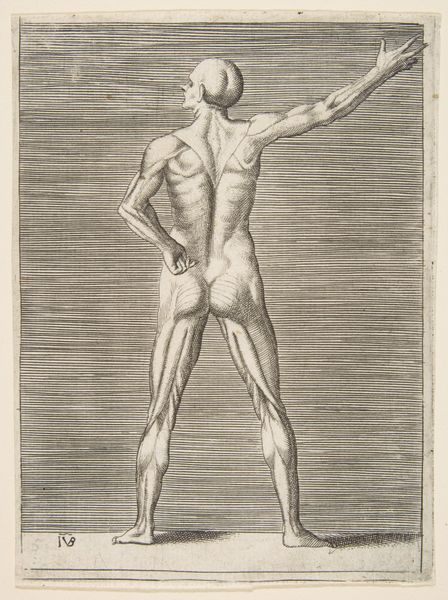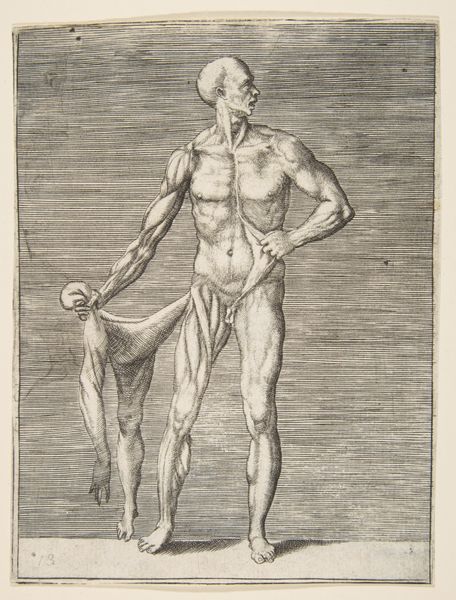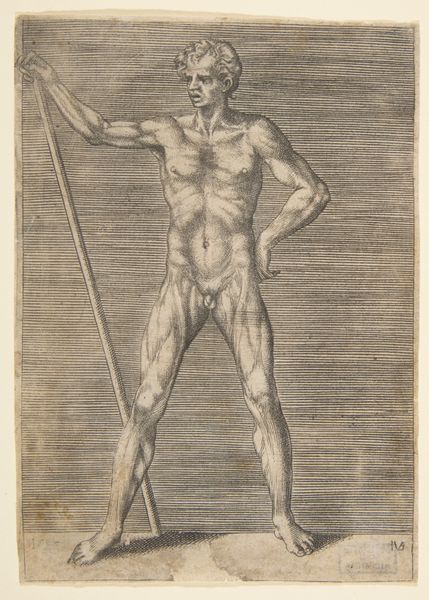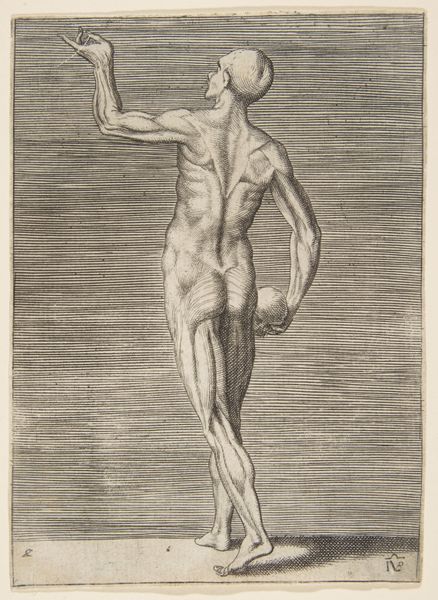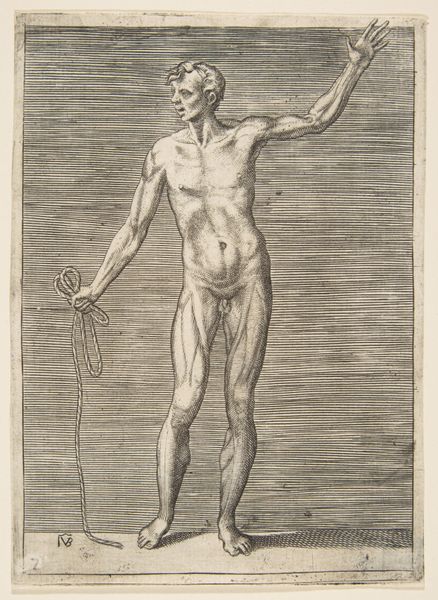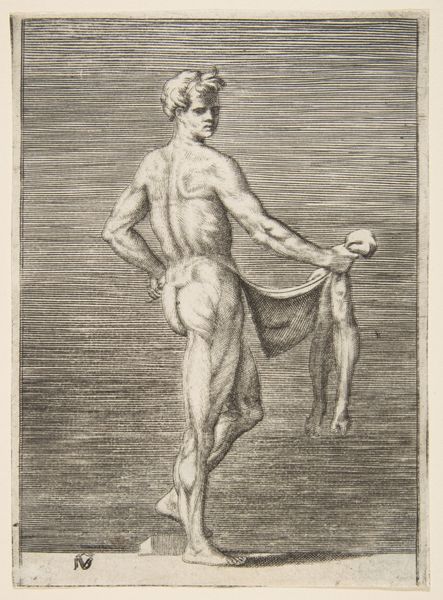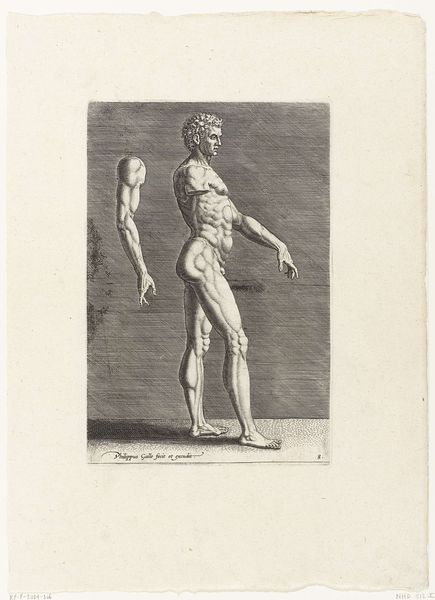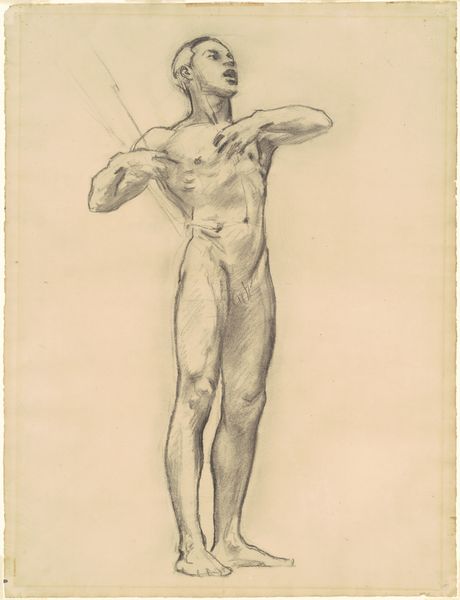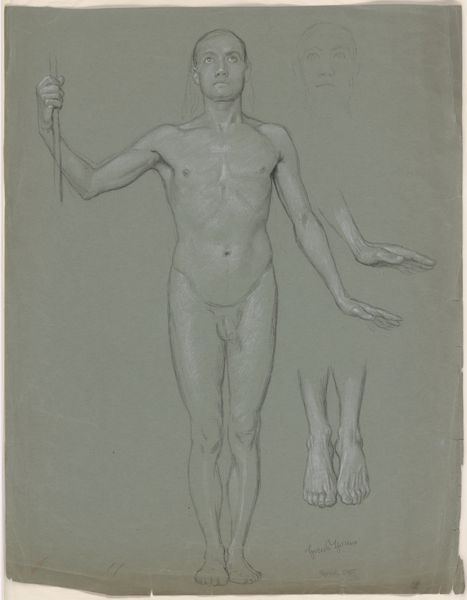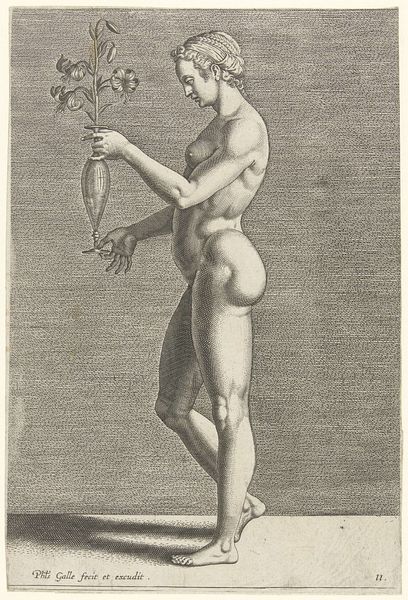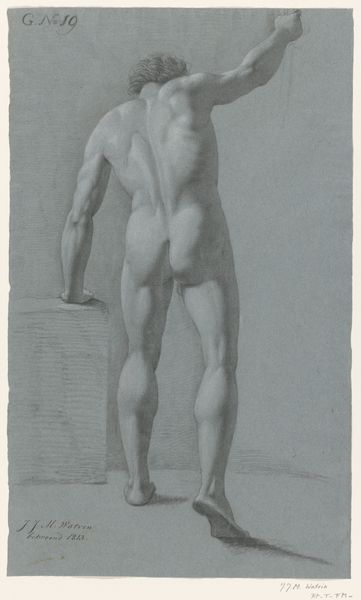
Flayed man seen from behind, holding a rope 1526 - 1536
0:00
0:00
drawing, print, intaglio, engraving
#
drawing
# print
#
intaglio
#
figuration
#
form
#
11_renaissance
#
italian-renaissance
#
nude
#
engraving
Dimensions: sheet: 6 x 4 5/16 in. (15.3 x 11 cm)
Copyright: Public Domain
Giulio Bonasone created this engraving of a flayed man seen from behind, holding a rope, in the 16th century, a time when anatomical studies were gaining prominence. Here, the visual language of science meets the socio-cultural norms of the Renaissance. The rendering of the flayed figure, with muscles exposed, is a detailed study in human anatomy, indicative of the period's interest in empirical observation. Yet, the man’s upright stance and his grip on a rope introduces themes of power, pain, and vulnerability. The male nude was often glorified, but here, we are confronted with a body stripped bare. The image may evoke a sense of unease, challenging our notions of beauty and the integrity of the human form. Bonasone invites us to meditate on the complex relationship between the body, knowledge, and representation. The image may ask: how do we reconcile scientific exploration with the emotional and ethical implications of such a stark portrayal of human fragility?
Comments
No comments
Be the first to comment and join the conversation on the ultimate creative platform.
